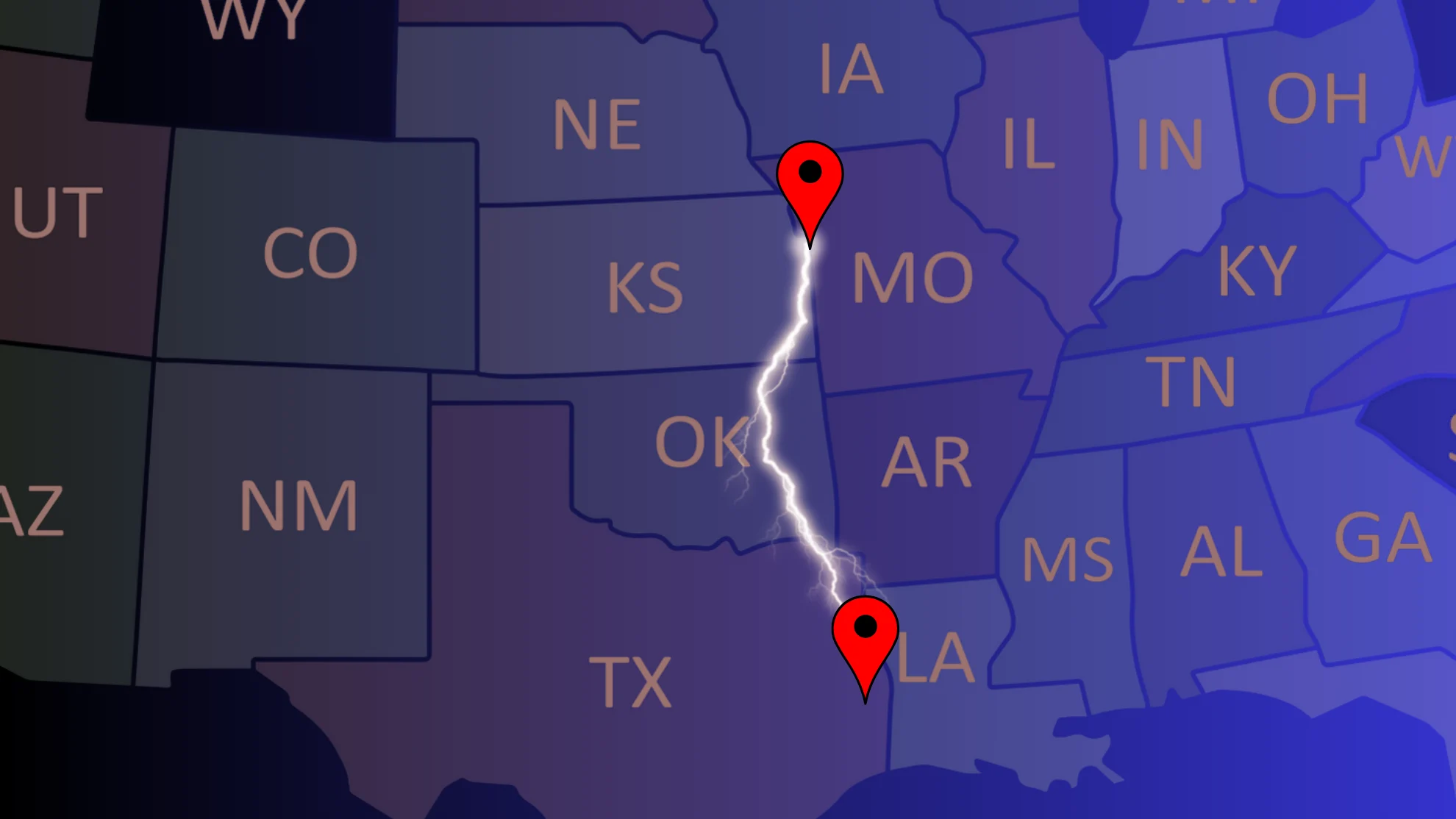
World’s longest ‘megaflash’ lightning streak was 829 km long
“The storm that produces a lightning strike doesn't have to be over the top of you.”
Scientists have just confirmed an October 2017 ‘megaflash’ set a new world record for the longest lightning streak ever recorded.
It streaked across eastern Texas and the Great Plains, touching down in Kansas City, MO, some 829 km away.
The flash, which was recorded using satellite data, beats the previous record holder by 61 kilometers. That 768-km flash occurred in April 2020 in the southern U.S.
While the October 2017 lightning strike is older, it was previously unnoticed, only becoming documented during a re-examination of the 2017 storm.

GOES-16 satellite image recording a record-setting 829-km lightning megaflash during a storm in October 2017. Red circles mark positively charged branches of the lightning, and blue circles mark negatively charged branches. (Image and caption: World Meteorological Organization/American Meteorological Society)
“It is likely that even greater extremes still exist, and that we will be able to observe them as additional high-quality lightning measurements accumulate over time,” Randy Cerveny, an Arizona State University President’s Professor in the School of Geographical Sciences and Urban Planning, said in a statement.
“We call [this] megaflash lightning, and we're just now figuring out the mechanics of how and why it occurs.”
Lightning detection and recording has historically relied on ground-based antenna networks that detect radio signals and estimate location and travel speed. Satellite lightning detectors, like the ones used in the recent analysis have only been in orbit since 2017.
Megaflashes are rare, but even a more “average” flash can extend quite far from its starting point, sometimes touching down 16 to 32 kilometers away from the origin storm cloud.
“That’s why you should wait at least half an hour after a thunderstorm passes before you go out and resume normal activities,” Cerveny said. “The storm that produces a lightning strike doesn't have to be over the top of you.”

The October 2017 flash extended from Texas to Kansas City, MO (Cheryl Santa Maria for The Weather Network)
Lightning facts
Lightning is hot. Really hot. A lightning bolt can heat the air around it to make it five times hotter than the surface of the sun.
There are approximately 100 lightning strikes every second globally. That works out to about 8 million lightning strikes a day.
Canada sees an average of 2.25 million lightning strikes per year.
Lightning safety tips
Stay away from windows.
Unplug appliances.
Avoid running tap water -- lightning can travel through pipes.
Try to reach a safe building or vehicle (picnic shelters, dugouts, and sheds are NOT considered safe).
Avoid high ground, water, tall, isolated trees, and metal objects such as fences or bleachers.
If you are out on the water, get to land and find shelter immediately.
If someone is struck by lightning
Call for help / dial 911. The injured person has received an electrical shock and may be burned or have other injuries.
People who have been struck by lightning do not retain an electrical charge and can be handled safely.
Give first aid.
If the heart has stopped beating, a trained person should give CPR.
Environment Canada offers a 30-30 rule. If you can count 30 seconds or less between seeing a lightning flash and hearing the thunder, take shelter and stay there until 30 minutes after you last hear thunder.
